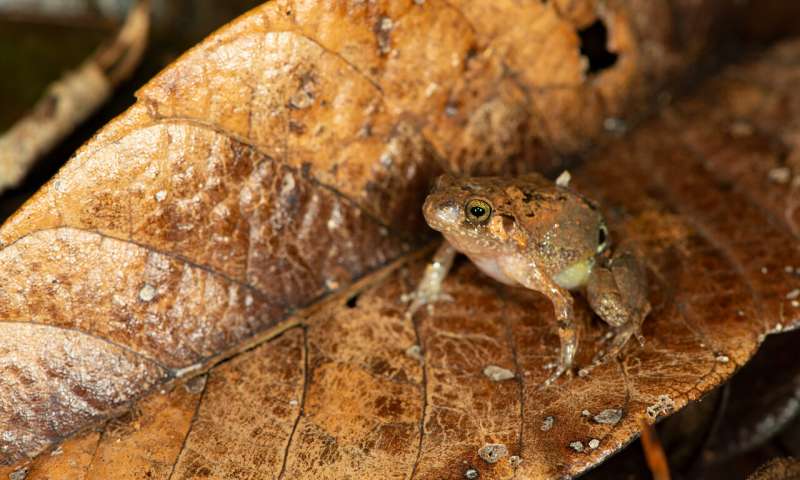New frog species hopping into spotlight, Diamond Frog sparkling in public
The female Rhombophryne Ellae specimen discovered by Dr. Mark Scherz sitting on a leaf. Photo taken by Dr. Mark Scherz.
October 20, 2020
The first thing that comes to mind while thinking about Madagascar is likely not the biodiversity of the amphibian species. However, there are approximately 244 amphibian species on the island, and there is a projected increase of these species that would almost double the population- between 377 and 465 new species would be discovered on the 226,658 square mile island, according to the Proceeding National Academies of Science- North America.
The genus Rhombophryne, with the proposed common name of “diamond frog,” has at least 23 of these species- many of which have been discovered within the past decade. Although the first frog in the genus was discovered in 1880; and for a long time remained the only in its genus for almost 100 years.
The frogs are fossorial and terrestrial, meaning they burrow inside the earth, as well as they live on top of it. However, some members of the genus are fully fossorial, according to Dr. Scherz in the open-access journal titled Zoosystematics and Evolution.
Junior Alyssa Sparacco-Ireland says, “[They] feel as though with discoveries about new species in general, it opens up a whole new world of possibilities with anatomy and biology.”
The most recent species of frog in this genus is Rhombophryne ellae. It’s characteristic orange flash-markings on its hips tipped the researchers off immediately, Dr. Scherz, who discovered the frog. “You can literally study a whole new species of frog, how cool is that?” Ireland asked.
The specimen was collected while the research team was in Montagne d’Ambre in December 2017, and genetic studies on the individual specimen indicated that Scherz and his team found a female member of Rhombophryne ellae.
This species is distinguished from others in its genus by its orange coloration, as well as its lack of spines in its eye region, and because of its smoother skin. Some of the closest members “do not have flash-markings, indicating repeated evolution of this trait within Rhombophryne.” Says Dr. Scherz.
Despite the significant biodiversity among amphibian species, issues are facing them, especially man-made problems such as deforestation and climate change, “conservation is an important aspect of learning about new species, and it is incredibly important that we take care of the species we share the world with,” says Ireland, “when we find out what this type of frog consumes we can make sure that it has access to it in the wild so it can continue to live undisturbed for as long as possible.”






